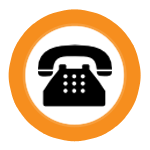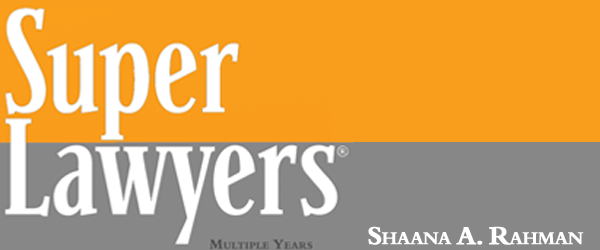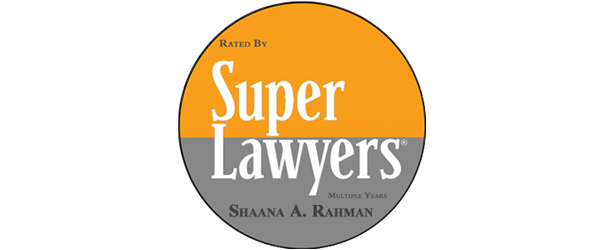
FOR IMMEDIATE RELEASE
SAN FRANCISCO, Calif., June 30, 2024 —
Rahman Law PC announces the sixteenth year of the law firm’s principal and founder, Shaana A. Rahman, being selected as a Top Rated Personal Injury Attorney in San Francisco, California on the Northern California Super Lawyers List. Ms. Rahman has litigated hundreds of legal cases from inception to resolution as lead trial counsel as a personal injury attorney. Her track record includes achieving numerous seven-figure settlements for her clients.
The Super Lawyer list contains only 5% of attorneys within each region and is distinguished by rigorous criteria such as professional achievements, independent research, peer-recognition, and peer-evaluations. Ms. Rahman was first selected as a Rising Star in 2009, a distinction reserved for just 2.5% of attorneys, before advancing to Super Lawyer status in 2012, a recognition she has continually maintained since then.
This year, Ms. Rahman was received three distinctions from Expertise.com: Best Personal Injury Lawyers in San Francisco, Best Car Accident Lawyers in San Francisco, and Best Truck Accident Lawyers in San Francisco. Ms. Rahman was recognized as one of the Top 20 Personal Injury Lawyers in San Francisco by Expertise in 2017, 2018 and once again in 2024. Further accolades include membership in the Multi-Million Dollar Advocates Forum; selection to the National Trial Lawyers’ Top 40 under 40 Attorney; an AV Preeminent® rating (the highest peer rating standard) from Martindale-Hubbell®, the authority in attorney reviews and ratings based on the opinions of members of the bar and the judiciary; and a Superb Avvo Rating based on client reviews of professional integrity.
Outside of representing clients as a personal injury lawyer, Ms. Rahman is a dedicated advocate for bicyclist and pedestrian safety throughout California. She actively supports non-profit organizations like the San Francisco Bicycle Coalition, Walk San Francisco, and Bike SLO County; contributing through events like Bike to Work Day, Light Up the Night, and Peak2Peak. She also shares her expertise through publications like Plaintiff Magazine and the blog on her website at rahmanlawsf.com/blog focusing on traffic safety issues affecting cyclists and pedestrians.
Reflecting on her achievements, Ms. Rahman stated: “Each day, when I see the devastating effects of street violence-on my clients, their loved ones and on my community, I recommit to advocating for safer streets and I will not stop until we eliminate all traffic fatalities and severe injuries for cyclists and pedestrians,” said Ms. Rahman. “I am deeply honored by Super Lawyers’ recognition of these efforts and I remain steadfast in my support for local organizations dedicated to keeping roads safe for cyclists and pedestrians.”
Ms. Rahman’s enduring presence in the top 5% of Northern California lawyers for sixteen years stands as a testament to her exceptional contributions to the field of personal injury law throughout California.
About Rahman Law PC
The personal injury lawyers at Rahman Law PC are powerful advocates for people who have been injured through no fault of their own. What makes Rahman Law PC different from other personal injury law firms is they care about what happens to their clients; they aggressively advocate for their clients’ interests and have a personal relationship with each client, taking the time to listen and figure out solutions that make sense from a legal point of view but also from a human perspective. By providing the highest quality legal services to those who have been injured or have suffered wrongdoing at the hands of other individuals, corporations, or public entities, the personal injury attorneys and trial lawyers at Rahman Law PC have a proven track record of results and have successfully recovered millions of dollars for clients throughout California. Rahman Law PC offers clients attentive service backed with big firm experience, making them ready to take on any opponent. To learn more about the personal injury lawyers at Rahman Law PC, visit https://www.rahmanlawsf.com or call (415) 956-9245 in San Francisco, (805) 619-3108 in Paso Robles, California.

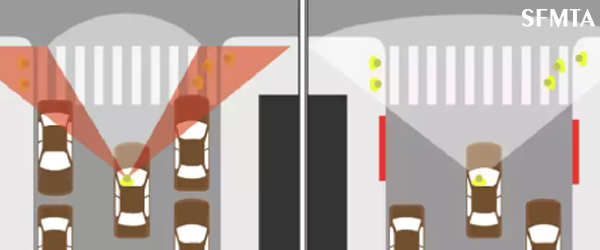
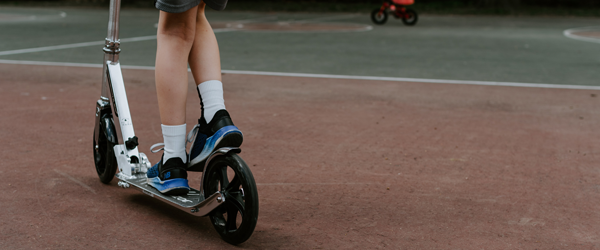
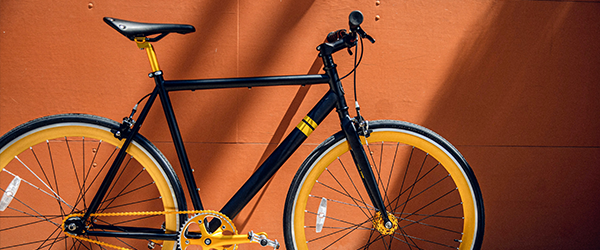
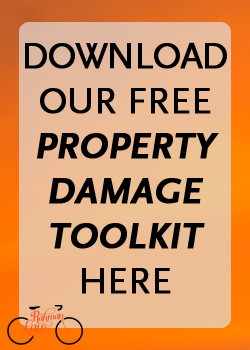
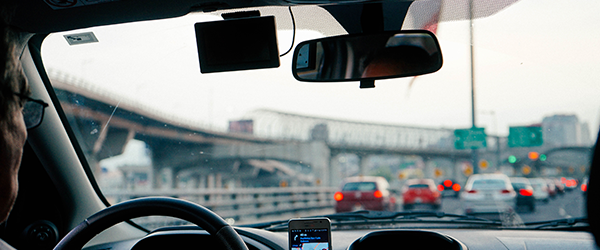
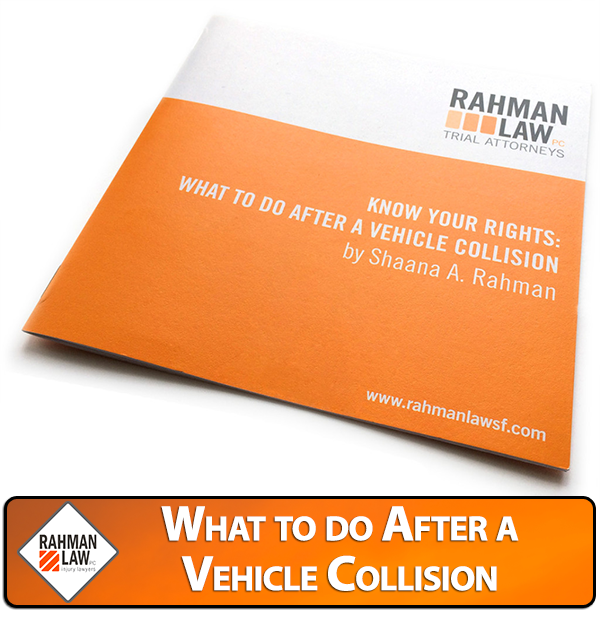
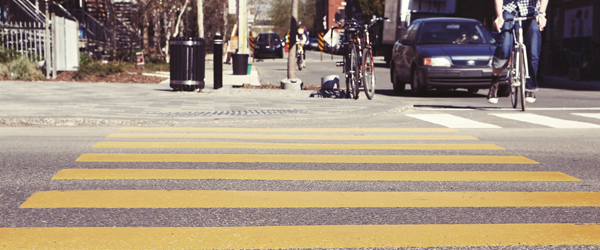 WalkFirst is part of the Vision Zero program targeting ways to reengineer the City of San Francisco to reduce personal injuries to pedestrians from vehicle collisions. 170 locations have been identified as the highest priorities and they are being corrected over the next five years. As personal injury attorneys in San Francisco, we’ve been following along with these plans excitedly. WalkFirst is focusing on Engineering, Enforcement, and Education to reduce the number of fatalities and personal injuries to pedestrians and we think it’s great!
WalkFirst is part of the Vision Zero program targeting ways to reengineer the City of San Francisco to reduce personal injuries to pedestrians from vehicle collisions. 170 locations have been identified as the highest priorities and they are being corrected over the next five years. As personal injury attorneys in San Francisco, we’ve been following along with these plans excitedly. WalkFirst is focusing on Engineering, Enforcement, and Education to reduce the number of fatalities and personal injuries to pedestrians and we think it’s great!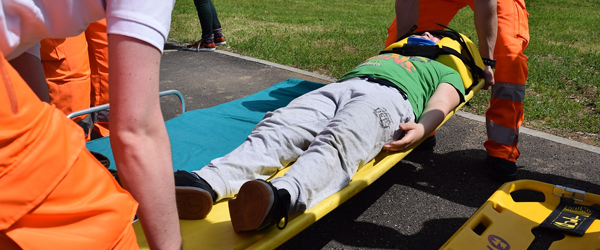 Not everyone feels comfortable picking up the phone and calling a personal injury attorney. We’re not sure why – we’re really great people to have in your corner! We care about our clients and have a personal relationship with each one. We even spend time on the phone answering questions from people who are not our clients because we are passionate about advocating for our community. (Learn more about
Not everyone feels comfortable picking up the phone and calling a personal injury attorney. We’re not sure why – we’re really great people to have in your corner! We care about our clients and have a personal relationship with each one. We even spend time on the phone answering questions from people who are not our clients because we are passionate about advocating for our community. (Learn more about 